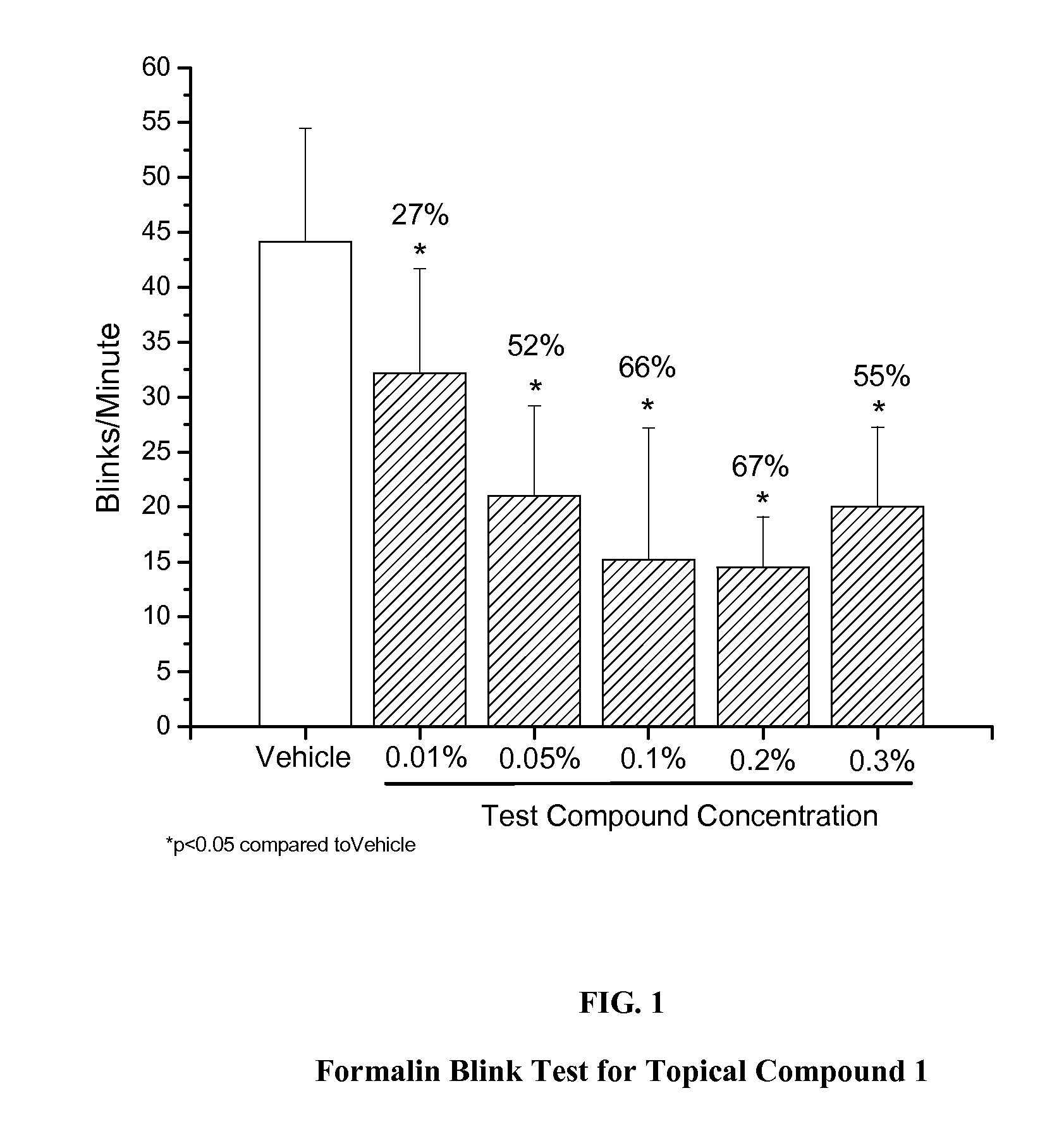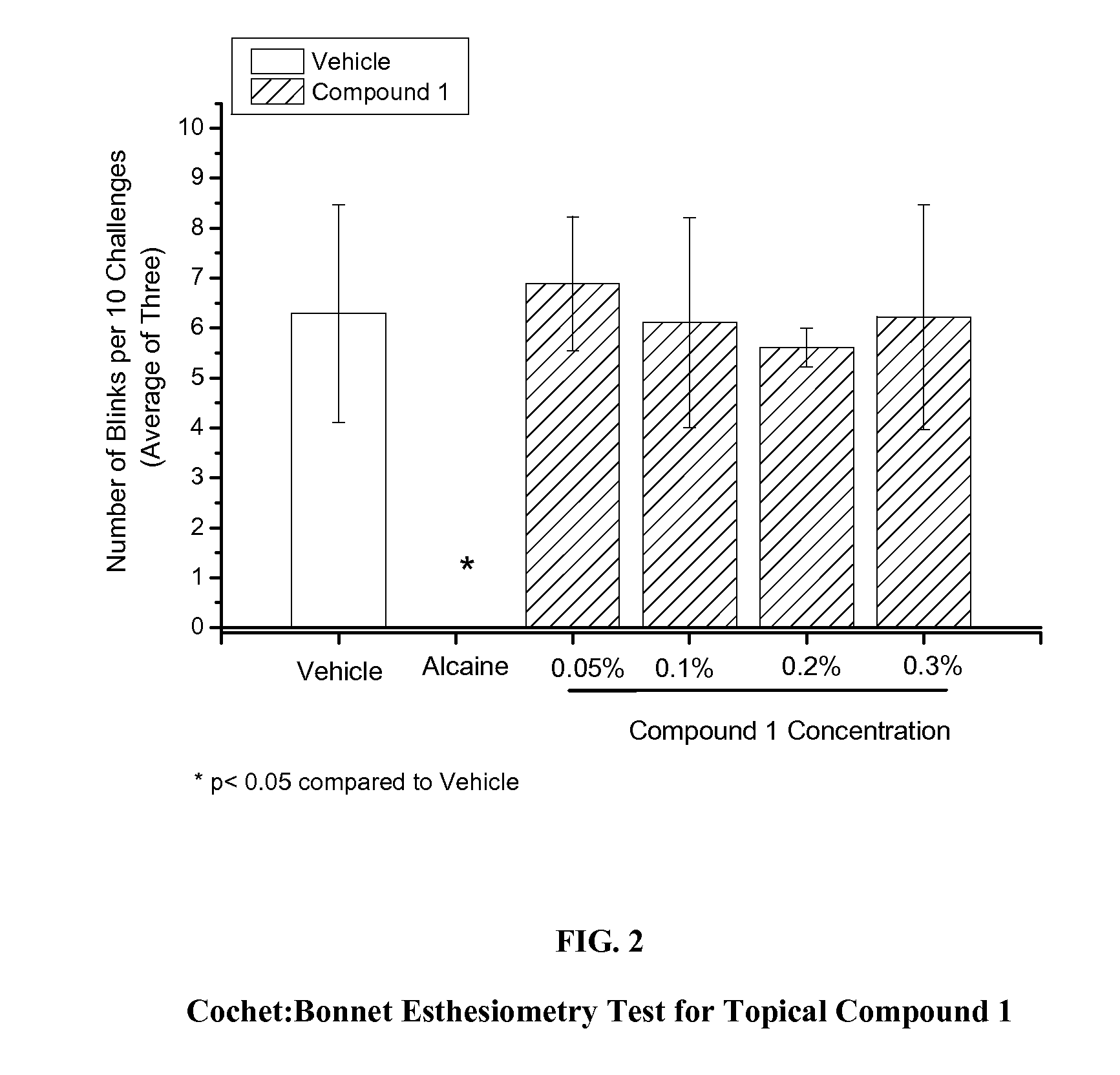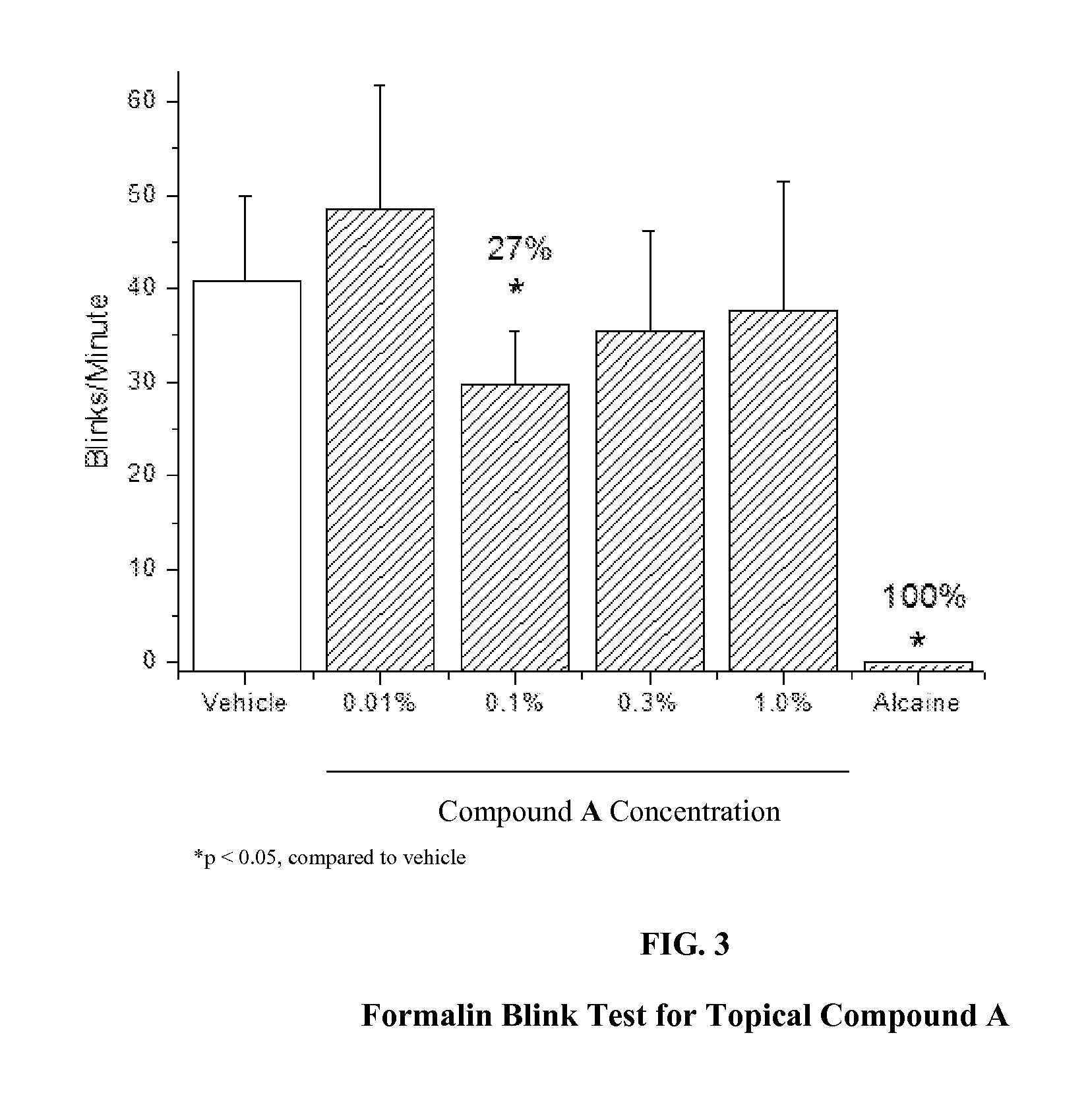Topical ocular analgesic agents
a topical ocular analgesic and ocular anesthetic technology, applied in the direction of biocide, heterocyclic compound active ingredients, drug compositions, etc., can solve the problems of limited use of topical ocular anesthetic agents, limited treatment efficacy and systemic and ocular side effects, and possible impairment of wound healing
- Summary
- Abstract
- Description
- Claims
- Application Information
AI Technical Summary
Benefits of technology
Problems solved by technology
Method used
Image
Examples
example 1
Analgesic Effect of Compound 1 of Formula I as Compared to Other Nay 1.7 Inhibitors
Formalin Blink Test
[0040]Formalin was prepared at 0.1% final in 0.9% saline from a stock of 10% neutral buffered formalin (Sigma-Aldrich, St. Louis, Mo.). Compound 1 was selected as a test agent of formula I. Compounds A, B, and C were selected as comparator Nav 1.7 inhibitors known in the art. Compound A is also known in the literature as XEN907, and has been reported as a Nav 1.7 channel inhibitor with an IC50 value of 3 nM in a guanidinium flux assay (Chowdhury, et al., Bioorganic and Medicinal Chemistry Letters 2011, 21(12), 3676-3681). The structure of Compound A is.
[0041]Compound B has been reported as a Nav 1.7 channel blocker with an IC50 value of 15 nM in a whole-cell voltage-clamp assay (Tyagarajan, et al., Bioorganic and Medicinal Chemistry Letters 2010, 20(18), 5536-5540; compound 38 in the paper). Additionally, when orally dosed at 10 mg / kg in a rat spinal ligation model of neuropathic pa...
example 2
Anesthetic Effects of Compound 1 of Formula I as Compared to Nay 1.7 Inhibitor Compound C
Cochet-Bonnet Esthesiometry Test
[0047]For the Cochet-Bonnet esthesiometry test that measures anesthetic activity, whiskers were trimmed from test animals or vehicle animals. OD eye of animal was dosed with 5 μL of test compound or vehicle. The animal was restrained in a clear plastic cone (DecapiCone®, Alcon Laboratories, Fort Worth, Tex.) which was trimmed as necessary to allow access to the OD eye. Five minutes after application of test compound, a Cochet-Bonnet esthesiometer, with a nylon monofilament diameter of 0.12 mm and length of 40 mm (0.8 g / mm2), was applied perpendicularly to the central cornea of the OD eye 10 times. This test was performed three times on each animal within 2 minutes. Data were expressed as the mean number of blinks elicited from 10 stimuli.
[0048]Compound 1 of formula 1 and compound C were evaluated in this assay, with the results displayed graphically in FIGS. 2 and...
PUM
| Property | Measurement | Unit |
|---|---|---|
| Fraction | aaaaa | aaaaa |
| Fraction | aaaaa | aaaaa |
| Structure | aaaaa | aaaaa |
Abstract
Description
Claims
Application Information
 Login to View More
Login to View More - R&D
- Intellectual Property
- Life Sciences
- Materials
- Tech Scout
- Unparalleled Data Quality
- Higher Quality Content
- 60% Fewer Hallucinations
Browse by: Latest US Patents, China's latest patents, Technical Efficacy Thesaurus, Application Domain, Technology Topic, Popular Technical Reports.
© 2025 PatSnap. All rights reserved.Legal|Privacy policy|Modern Slavery Act Transparency Statement|Sitemap|About US| Contact US: help@patsnap.com



